at the Oregon Shakespeare Festival
Hannah and the Dread Gazebo
by Jiehae Park
WORLD PREMIERE
At least half of the audience has a wonderful time seeing a fun show with amusing characters. But, make no mistake about what’s amusing: Asian stereotypes speaking pigeon English while committing cultural faux pas that annoy the very “American” 20-something children of the butt of the jokes.
2017 audiences would not put up with a performance whose entertainment value hinged on older African Americans portrayed as lazy Stepin Fetchit’s. That racism would not be considered amusing.
But, apparently it’s still okay to anchor an evening’s laughs on over-emotional, bicycle riding, odd-speaking Asians. It’s especially okay when the play is written by person of Korean heritage.
You can examine stereotypes, make them amusing, and still treat the characters with respect. Last year’s Vietgone! played off the cultural divide of immigrant Asian generations. Vietgone! worked to tell the story of the now-older, immigrant generation, integrating the Old-World myths into a unified family history that that story’s playwright shared with audiences with love, respect, and… yes… humor. (I still remember fondly the Ninja motorcycle fight!)
But, in Hannah, there is no cultural reconciliation. Instead, it’s all about the title character. Quirky-acting Grandmother, Mother, and Dad exist only for Hannah’s self-absorbed attempt to connect to her family and cultural heritage. Over-the-top caricatures come and go as Hannah makes meaning of her family and centuries of Korean heritage… all in the two weeks she has allowed for this revelation, or, if you prefer, in the 90-minute running time of the play. She never seems to catch on to what Dad or anyone else is about unless the storyline also involves her. Korean stuff remains alien and laugh-inducing to the end.
Beyond the racism, the play is simply poorly constructed and written.
It’s another one of those plays so loaded with Symbolism and Meaning that you know you’re a boob for not appreciating the greatness of it all. I confess I struggled. I tried to add meaning to the thin, often-repeated, poorly detailed story of a bear and a tiger. That gem had so much importance, and so much of that importance remains lost on me.
Then there are the great moments of Magical Realism — or of something. One favorite is the dropping of a severed bloody foot into Mother’s hands when she is in a dream scene on a roof. Of course that foot drop gets a laugh because it’s such an absurd piece of physical comedy. But, I am also sure that the oversized bleeding prop had much deep meaning that I need to be educated on. Unfortunately, it was just one of so many MR moments that I really didn’t appreciate fully.
There is an entire semester, if not academic year, that explores the reason for the magpie, rock, and why the females in this particular family have a “wish”. Pretentious hogwash.
I also need to complain about casting. There are many lines where Sean Jones (Dang, Hannah’s brother) talks about being disoriented in Seoul because everyone looks just like him, so Asian. Well, all the cast in Hannah does look Asian and has Asian surnames, except for Sean. The mismatch between the physical character and his lines is disconcerting. Sean is tall, dark, hairy, and doesn’t have discernibly Asian features (whatever they are). When he bemoans how everyone in Korea looks just like him, you want to see his DNA test to see where Ancestry.com says he really comes from. (In a panel discussion, he explained that he is half Japanese.)
Of course, Sean does an admirable job acting in the role. It’s not his fault that his looks don’t match the script. And, all the other actors are just fine, too. My unhappiness has nothing to do with the onstage talent or the technical aspects of the show.
Finally, let me assure you that although I get only a “C” on the symbolism test, I have an inkling that the play is about Hannah coming to understand her heritage, getting her mother through a depression, and about the family in general. But, Hannah doesn’t do a great job of growing. And, Hannah’s quest has nothing to do why the audience is having a good time. Her search is a cover to allow the racist core to masquerade as art.
Simply, the audience enjoys the performance because of the witty, snarky anti-Asian cartoons that are the foundation of this 90-minute travesty.
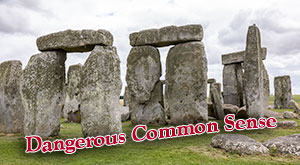
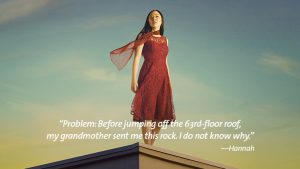
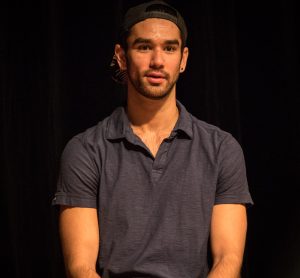
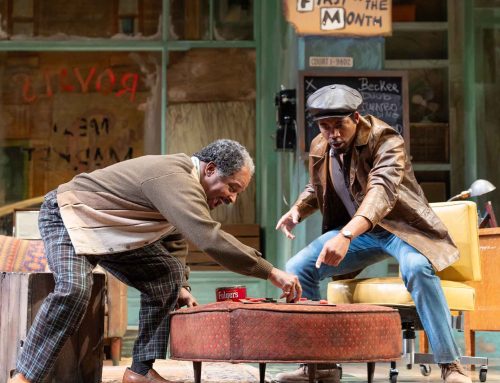
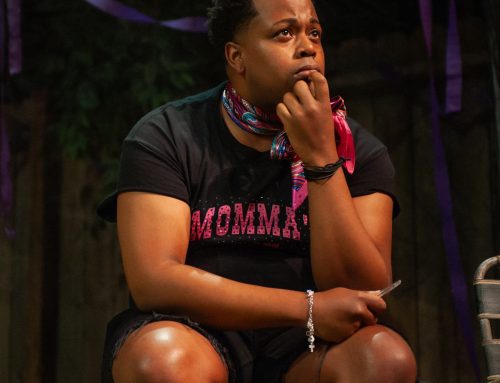
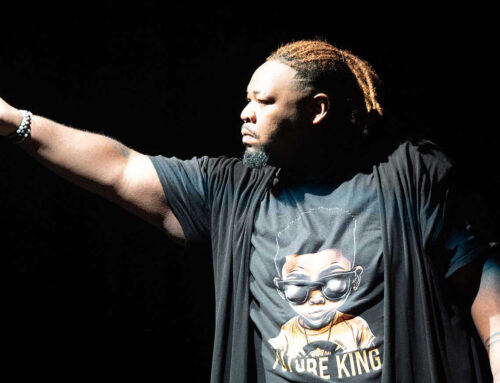
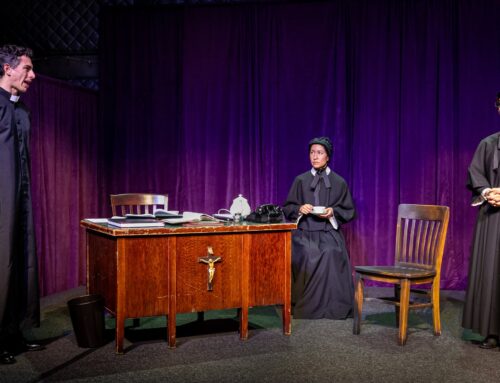
Leave A Comment